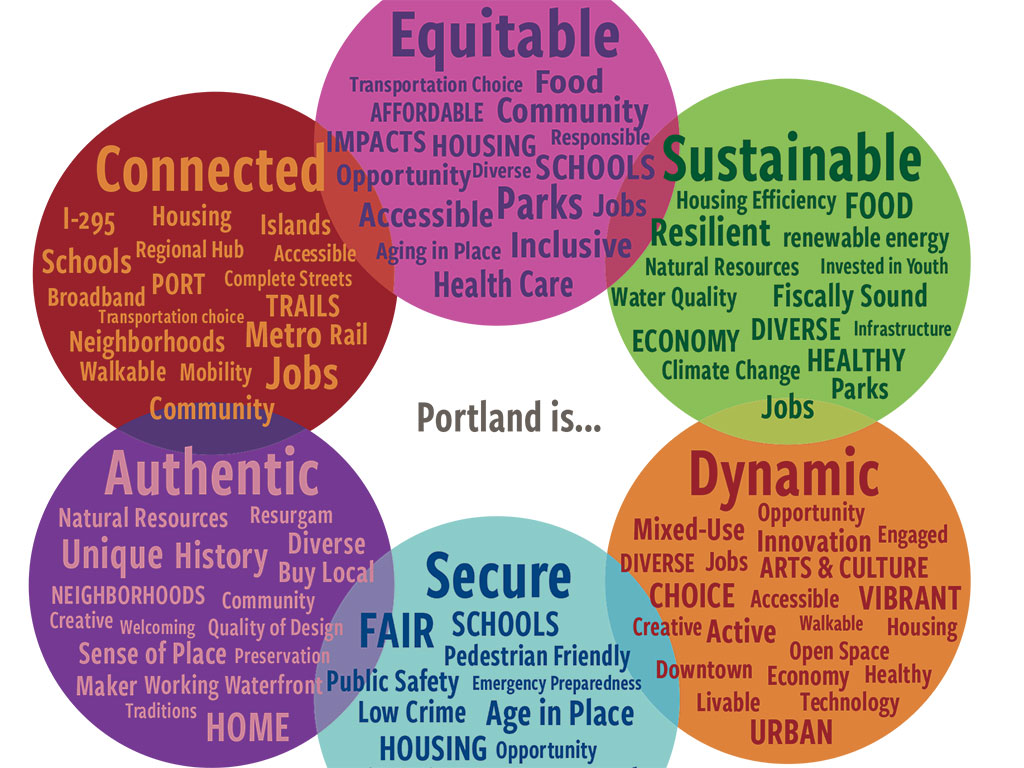Analysis: Updates to Portland’s Land Use Code Missing Middle Density Housing
By Tony Zeli
ReCode Portland is an effort to refresh the entirety of the city’s land use code. City planners want to make the code more “user-friendly” and ensure it reflects the city’s ten-plus year goals. The City released a draft of their First Wave Changes this summer. The changes will touch every area of the urban landscape, including housing, design, preservation, and transportation.
But do the changes released so far reflect the community’s goals? These goals are named in Portland’s Plan 2030, the city’s long-term comprehensive plan. It calls for an equitable and authentic city with unique neighborhoods, where residents can live and relax near where they work. Importantly, the plan reflects a desire that the benefits and burdens of Portland’s growth be shared fairly across the city.

But does Recode achieve this? From the discussions I have had with local experts and concerned residents who have been following the process, it does not. Specifically, the First Wave does not address the missing middle in housing. Instead, the future looks more like a downtown that keeps getting denser and single-family neighborhoods that remain the same.
WHAT IS THE MISSING MIDDLE?
Ian Jacob is a West End resident who is advocating for the City to slow down the ReCode process and better educate the public. He wants to see a Portland that grows to accommodate a diverse population while honoring the existing neighborhood character.
”As long as there is a demand for housing, we will get more housing – just not necessarily the type we need,” says Jacob. “Planning staff have not demonstrated that the proposed changes are going to create the kind of building types we need – the missing middle (small houses, varied multi-family, triple-deckers, etc.).”
“I could not agree more,” says Todd Morse, president of the Urbanist Coalition of Portland, a group advocating for specific policies in the land use code to support more middle density, mixed use neighborhoods. According to Morse, the ReCode edits so far focus on density downtown and along busy transportation corridors. Or to put it another, where density is already found. And they do the minimum in terms of building up single-family neighborhoods.
Middle density housing, such as duplexes, 3-4 unit buildings, and other house-scale buildings don’t stand out in existing neighborhoods. Medium density housing tends to support walkable neighborhoods with local business and is a crucial element in providing an array of housing options that working families can afford.
Residential Zones in ReCode Portland First Wave Changes
Seeing middle density housing spread throughout the city’s neighborhoods, not just in and around the peninsula but into the single-family neighborhoods like Rosemont and North Deering, could provide the missing middle housing options residents need. But what the First Wave Changes actually do is further densify already dense areas, especially on the peninsula and along corridors like Forest Avenue and Congress Street. Meanwhile the changes seem to keep the rest of the city as little changed as possible.
For instance, the new RN1 and RN2 zones – which map onto the current R1, R2, and R3 zones that make up most of Portland’s mainland residential zones – will still only allow up to two units on a lot. It is not until RN3, or the current R4 zone, that the code starts to allow even 3-4 unit buildings. This is not a substantial change, especially with other restrictions, such as minimum lot sizes. Building up to the maximum allowable unit number won’t always be easy.
As Martin notes, “The changes are incremental at the end of the day… I think ultimately the impact will be small.”
CAN WE GET THERE?
Several downtown neighborhood associations are discussing how to get the ReCode Portland process slowed down and made more available to all.
According to Nell Donaldson from Portland’s planning department, “We are reassuring people that the opportunity to learn and provide feedback is ongoing, and that these articles (plus more to come) won’t be finished until they work their way through the Planning Board and City Council process.”
Donaldson recommends visiting the Recode Portland website to learn more at https://www.recodeportland.me/first-wave-changes. You’ll find videos and information on an upcoming virtual event in mid-September. The event will be publicized through the City’s calendar, social media, and ReCode email list.
The city wants to hear from you. Donaldsen says they are open to any kind of input, “but specifically, if members of the public have feedback on particular draft changes (particular uses or dimensional standards in their zone, for instance), that’s very helpful.”
Todd Martin from the Urbanist Coalition agrees it is difficult to participate in zoning decisions. He recommends his group as a resource. The Urbanist Coalition of Portland have their own set of recommendations to help build the missing middle in Portland. Also find a helpful zoning map, showing where the current residential zones are located throughout the city. Of course, says Martin, if you want change, you’ll have to find others who agree with you and advocate. And the best way to do that is to engage with your city councilor.
For More Info
The contact email for ReCode is recodeportland@portlandmaine.gov.
If you’d like to learn more, visit https://www.recodeportland.me/code-evaluation.






1 Comments
Pingback: Candidate Survey - Urbanist Coalition of Portland asks candidates about ReCode Recommendations - The West End News